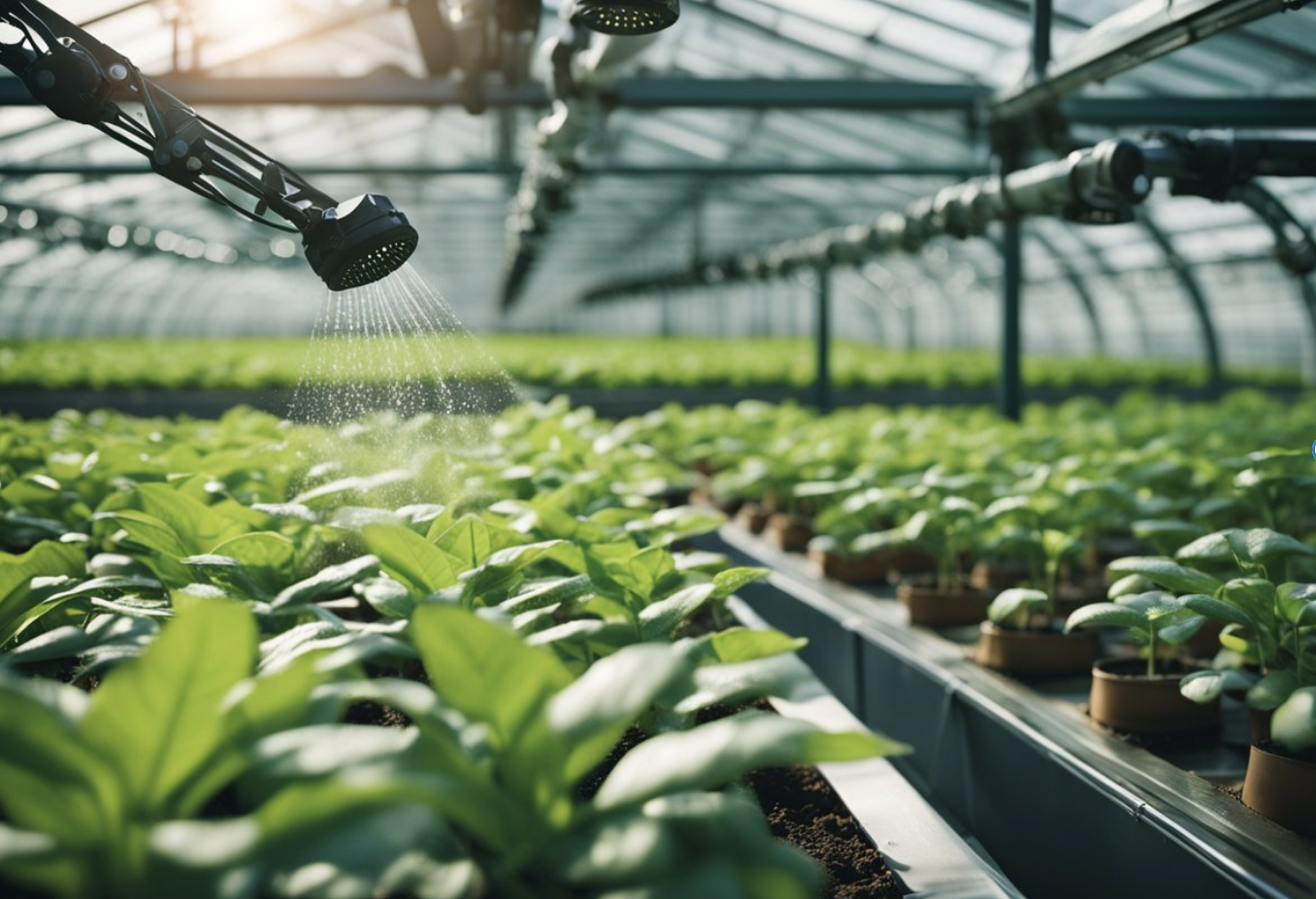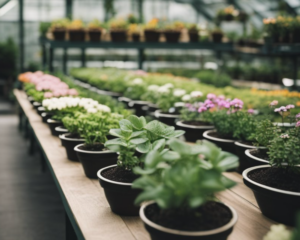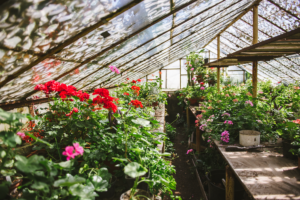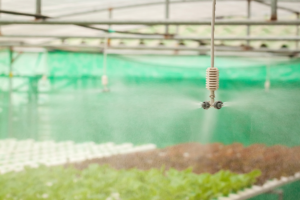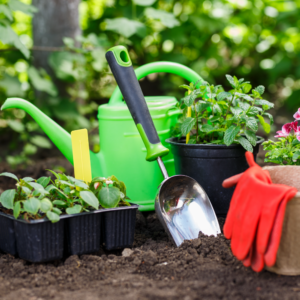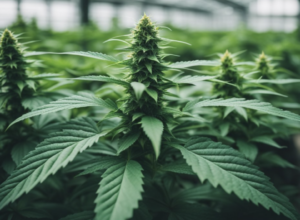I’ve been noticing how technology is really changing the game in agriculture, especially with greenhouse automation. It’s like every plant gets VIP treatment now. Greenhouses used to be these hands-on, labor-intensive operations, but with the latest tech, they’re turning into these super-efficient, almost sci-fi environments. Sensors, climate control systems, and automated feeding machines mean that plants are getting exactly what they need, when they need it. It’s making the whole growing process a lot more predictable and way less prone to human error.
And it’s not just about pampering plants; it’s a smart business move, too. With all these automated systems, growers can save time and cut down on costs, while also boosting their crop yield. It’s a win-win. Plus, with climate change mixing things up, having a controlled, indoor space means that veggies and flowers can thrive all year round, without getting knocked out by weird weather.
I can’t help but geek out when I think about the future of this stuff. Imagine managing an entire greenhouse right from a smartphone, with robots doing all the heavy lifting. That’s not just convenient, that’s revolutionary for farmers everywhere. These advancements in greenhouse automation are slowly turning agriculture into a high-tech industry, and honestly, I’m here for it. It’s an exciting time to watch things grow – literally and figuratively.
Benefits of Greenhouse Automation
I’ve found that automating my greenhouse not only makes my life easier but also benefits my plants and the environment immensely.
Improved Plant Health and Yield
In my experience, automation directly boosts plant health. It’s all about delivering the optimal conditions consistently. For instance, automated irrigation systems provide water at the exact time and amount my plants need, which significantly reduces stress on the plants. I get a more uniform crop because each plant receives precise treatment.
Key Facts:
- Consistency: Automated systems maintain ideal growing conditions.
- Monitoring: Sensors track soil and air conditions, prompting adjustments in real-time.
Efficient Resource Management
Resource efficiency is a game-changer for me. I use a climate control system that adjusts the temperature, humidity, and CO2 levels, ensuring that not a kilowatt or a drop of water is wasted.
This is what I’ve found:
- Water Savings: My irrigation system cuts water usage by up to 90% compared to traditional methods.
- Energy Optimization: Energy-efficient lighting and climate control minimize electricity use.
Enhanced Sustainability and Environmental Impact
My push for sustainability is underpinned by my automated greenhouse. It’s about doing more with less. With automation, my environmental footprint shrinks—lower water usage, efficient nutrient application, and reduced pesticide needs due to better pest management.
Sustainable Highlights:
- Reduced Waste: Precision application of water and nutrients means less runoff and waste.
- Pesticide Use: By catching issues early, I minimize the need for chemical interventions.
Core Components of Automation Systems

Now, if I’m going to talk greenhouse automation, it’s critical to cover the machinery and gadgets that keep the place ticking. We’re looking at how climate gets regulated, plants get their drinks and food, and how all-important light and CO2 levels are managed.
Climate Control Systems
My greenhouse won’t thrive unless I’m dialing in the right temperature and humidity, and that’s where a climate control system steps in. This isn’t just a thermostat and a misting bottle; we’re talking about a sophisticated setup that constantly adjusts the environment inside the greenhouse. Here’s how I make sure my plants are living their best life:
- Temperature Sensors: These guys monitor the heat levels around the clock.
- Humidity Sensors: They’re like my own personal weather stations, keeping tabs on moisture in the air.
- Ventilation: If it’s too hot, this system kicks on fans or opens vents to cool things off.
With these tools, I play Mother Nature, ensuring my plants get the exact climate they crave.
Irrigation and Fertilization
Next up, let’s chat about keeping my green friends watered and well-fed, which gets a ton easier with automation. I’ve got a system that’s precise and saves me bucketloads of time and water. Here’s my setup:
- Drip Irrigation: Delivers water straight to the roots, minimal waste.
- Fertilizer Injectors: These mix in nutrients with the water, so my plants get a tasty cocktail with every sip.
I keep my plants hydrated and nourished without overdoing it, thanks to these smart systems.
Lighting and CO2 Management
Light and CO2 – they’re like the energy drink and breath of fresh air for my plants. I use an automated system that doesn’t drop the ball:
- LED Grow Lights: These bad boys give off the perfect spectrum of light, and they’re energy savers too.
- CO2 Generators: They bump up the CO2 levels, which is like a performance boost for plant growth.
I make sure my plants get enough light to photosynthesize like champs and enough CO2 to grow bigger and faster. It’s all about striking that perfect balance for an epic harvest.
Setting Up Your Automated Greenhouse
When I decided to hop on the automated greenhouse train, there were some key choices I made early on about the layout, tech, and cost that really shaped my experience.
Design and Customization
I started by hammering out the blueprint. My focus was on the greenhouse size and the types of plants I wanted to grow. Space dictates a lot, from shelving layouts to the type of automation gear that’ll fit. I picked a design that allowed flexibility, and here’s a snapshot:
- Space Utilization: Racks and vertical farming areas
- Optimization for plant types such as:
- Tomatoes (need more height)
- Herbs (smaller, more compact)
- Ventilation: Automated roof vents for air circulation
- Insulation: Double-glazed panels for temperature control
- Aesthetics: I went with a green trim because, well, I like green!
Installation and Investment
Next up was setting my budget and considering the long-term savings. Below is the breakdown of the initial setup costs:
| Item | Cost |
|---|---|
| Basic structure | $3000 |
| Automation hardware & sensors | $2000 |
| Climate control system | $1500 |
| Software & subscriptions | $500/year |
I factored in the energy savings from smart systems which, fingers crossed, should help this investment pay off in a few years.
Integrating Smart Technology
I wanted to talk to my greenhouse (figuratively speaking), so I went with smart tech that lets me monitor things:
- Climate Control: Wi-Fi-enabled thermostats
- Irrigation: Automated watering schedules to match weather forecasts
- Monitoring: Cameras and sensors for real-time health checks on my plants
- Data Analysis: Apps that interpret all that sensor data and suggest tweaks
Got these all linked up to my phone. It feels like having a bit of the future right in my backyard.
Monitoring and Control
I find that the essence of modern greenhouse automation revolves around the constant gathering and analysis of data to ensure optimal conditions for plant growth. This involves the integration of advanced sensor networks for environmental tracking and technologies that grant me remote access to real-time data.
Real-Time Data and Remote Access
I absolutely appreciate the wonders of having real-time data at my fingertips. It’s like being omnipresent in my greenhouse. With a smartphone or laptop, I can instantly check the temperature, humidity, CO2 levels, and light intensity from anywhere at any time. This isn’t just convenient; it’s revolutionary for making quick, data-driven decisions that can be the difference between a thriving crop and a lost one.
- Temperature: Average 21°C (monitored every 15mins)
- Humidity: 60% RH (updated every 30 mins)
- CO2 Levels: 400 ppm (checked hourly)
- Light Intensity: 1500 lux (monitored real-time)
Sensor Networks and Environmental Tracking
Diving into my greenhouse’s sensor networks, I see them as the eyes and ears of the operation. These sensors are scattered throughout, monitoring soil moisture, nutrient levels, and environmental conditions. They feed information back to my central system, painting a detailed picture of the greenhouse climate. This environmental tracking means I can adjust settings on the fly, maintaining the perfect balance for my plants to prosper.
- Soil Moisture Sensor Readings:
- Ideal range: 20-30% VWC
- Current status: 25% VWC
- Nutrient Levels:
- Nitrogen (N): 200 ppm
- Phosphorus (P): 50 ppm
- Potassium (K): 300 ppm
Optimizing Growth Conditions

Creating just the right environment for plants isn’t a walk in the park, but with the right tools, I can fine-tune the essential elements like temperature and soil conditions to hit that sweet spot for optimal plant growth.
Climate Regulation for Optimal Growth
I’ve got to nail the perfect growing conditions when it comes to climate inside a greenhouse, and that means keeping a steady eye on the thermostat and the humidity dial. Ideal temperature is a must since plants are pretty picky about that. I tweak it to ensure it’s neither too hot nor too cold, depending on the crop.
- Temperature Control: I use sensors and automated systems to maintain a steady range – usually around 70 to 75°F for many plants.
- Humidity Management: Too much moisture in the air? Things can get moldy. Not enough? Plants go thirsty. I aim for that Goldilocks zone, right around 50-60% relative humidity.
- Ventilation: Smart ventilation systems kick in to refresh the air and keep everything balanced, not allowing stagnant air to hamper my plants’ vibe.
Soil and Substrate Management
Now, when it comes to what’s under my plants’ feet – or roots – that’s where soil and substrate management come into play. I make sure the soil moisture and substrate temperature are at prime levels to avoid root rot or stunted growth.
- Soil Moisture: I rely on automatic irrigation systems that are scheduled or use soil moisture sensors to water just the right amount – not too swampy, not too dry.
- Substrate Temperature: Seedlings in particular love warm feet. A substrate heating system is my go-to to keep those roots cozy, sitting at the optimal range of about 68-75°F.
- Nutrient Availability: By checking the electrical conductivity of the substrate, I ensure nutrients are plentiful and accessible to my green friends.
Challenges and Consideration
Implementing greenhouse automation systems comes with its fair share of hurdles, each requiring careful planning and execution. Accurate forecasting ensures a balance between initial expenses and long-term savings, while the complexity and sophistication of technology demand steadfast reliability. As operations expand, scaling up in a seamless and cost-effective manner can be quite the jigsaw.
Balancing Cost and Benefit
When it comes to parsing out my budget, I often find myself wrestling with the trade-offs of upfront automation costs against the promise of long-term gains. Commercial greenhouses don’t come cheap, and neither does advanced tech. To illustrate, I’ve seen initial labor cost savings through automated watering systems, but the price tag on that setup can cause a serious case of sticker shock. To aid my decision-making, I’ve found it useful to lay out my expected expenses and savings in a simple table:
| Automation Feature | Initial Cost (USD) | Annual Savings (USD) | Break-even Point (Years) |
|---|---|---|---|
| Watering System | 10,000 | 2,000 | 5 |
| Climate Control | 15,000 | 3,000 | 5 |
| Weeding Robots | 8,000 | 1,000 | 8 |
Maintaining Reliability and Consistency
There’s nothing quite like the frustration when high-tech tools decide to take an unscheduled hiatus. In the pursuit of automation, I can’t underscore enough the value of reliability. I’ve come to learn that it’s not just about having a system, but having one that works without fail, day in, day out. Whether it’s sensors, climate control or irrigation systems, consistent performance is non-negotiable. I always emphasize regular maintenance checks and having a contingency plan in place to avoid any hiccups in my operations.
Ensuring Scalability and Adaptability
As my greenhouse grows, the systems I put in place today need to keep up with tomorrow’s demands. Scaling presents a unique challenge, as the automation solutions suitable for a small setup might not fit the bill when operations multiply. It’s critical for me to choose flexible systems that can be upscaled with minimal disruption and additional costs. For instance, my software should be capable of integrating new sensors and controllers as I expand, without needing to reinvent the wheel each time.
Conclusion
After exploring the ins and outs of greenhouse automation, I’ve realized how pivotal it is in modern agriculture. Automating processes, from watering to climate control, not only boosts plant health but also improves the efficiency and sustainability of our greenhouses. My experience tells me that embracing such tech can radically transform our food production.
I’ve seen firsthand how sensors and control systems can lead to impressively consistent yields. Plus, the time saved on manual labor means I can focus more on improving other aspects of my business. It’s clear to me that going automated is no longer a luxury, but a necessity for staying competitive.
However, it’s important to remember that investing in these systems requires upfront capital. I had to carefully weigh the costs and benefits, but in my analysis, the long-term savings in resources and improvements in crop yield were well worth it.
Admittedly, there is a learning curve when I first integrated these systems into my operations. Yet, the time invested in mastering them pays off with more predictable harvests and reduced waste. It’s a win-win for the environment and my bottom line.
In conclusion, I’m convinced that automating my greenhouse was one of the best decisions I made. Sure, challenges popped up along the way, but the advantages far outweighed the hurdles. For any grower contemplating automation, I’d say dive in—the future of farming is here, and it’s automated.

